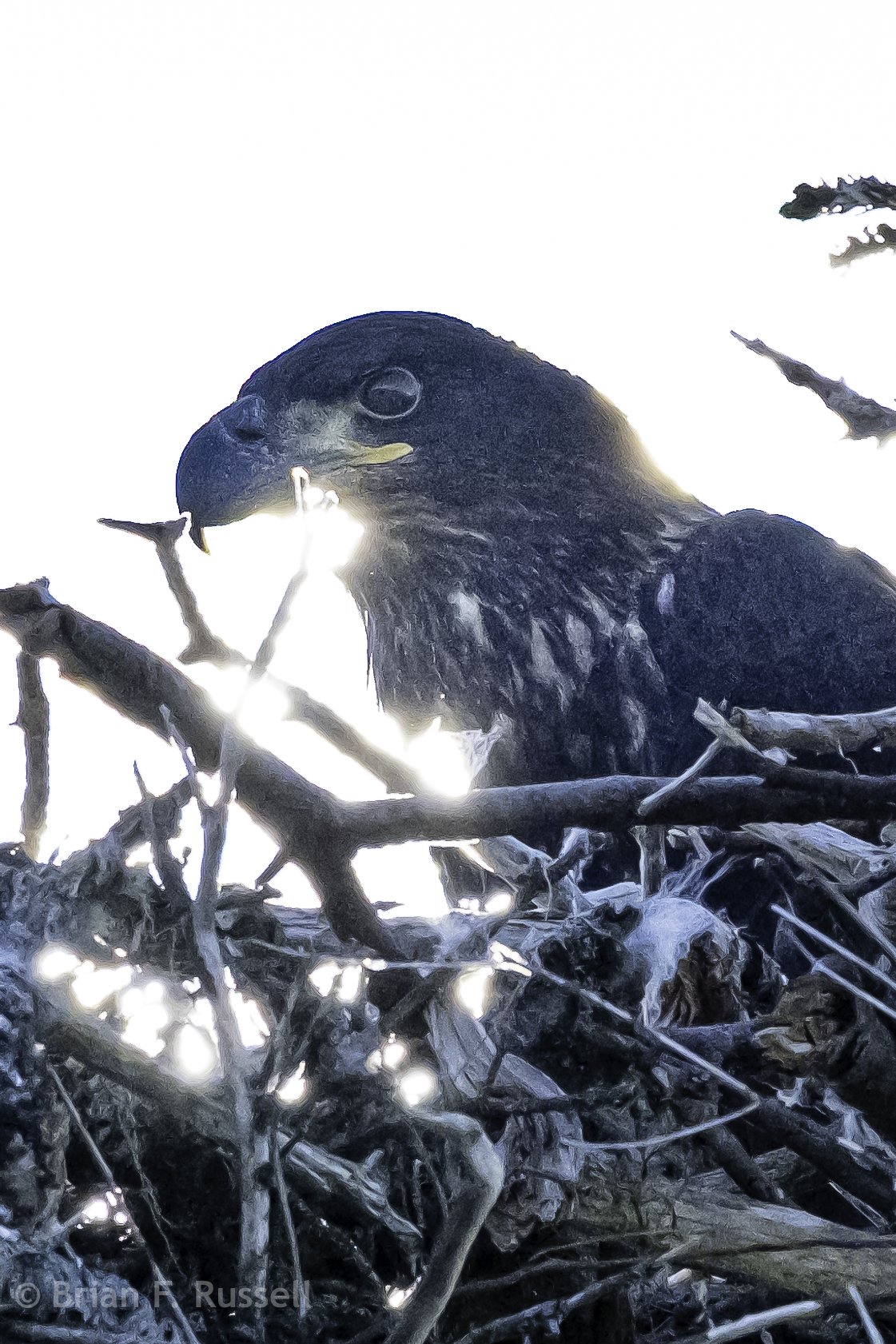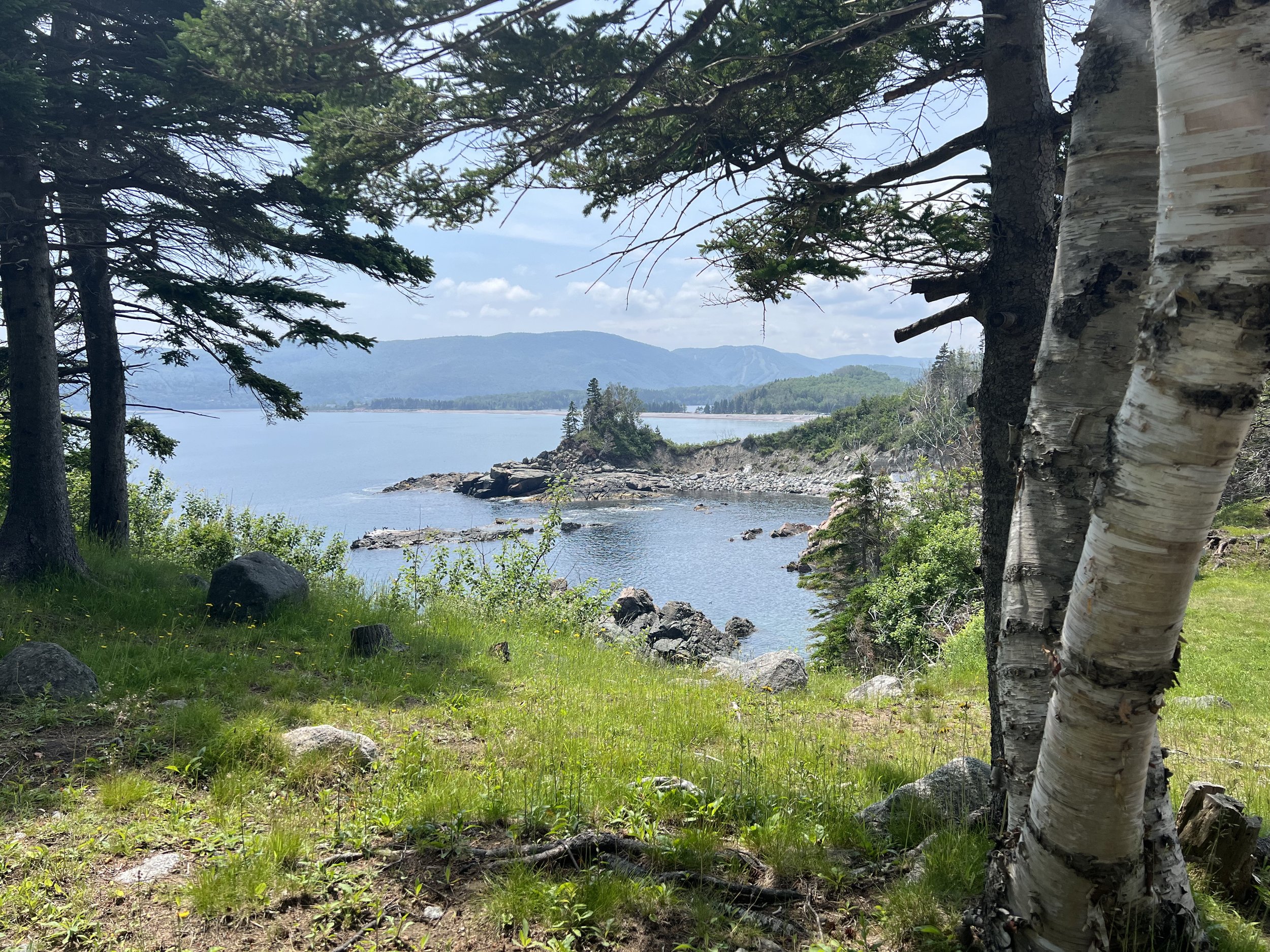Lake sailing
Helacious at anchor in Bras d’Or Lake (photo credit Jerry Callen)
A day sail northeast from Halifax brings you to the stretch of coastline commonly referred to as the Eastern Shore. It is a cruisers dream. Many uninhabited rocky islands, sandy beaches and sheltered coves. We spent a few days exploring as we worked our way up the coast. The navigation between rocky islands was fun and challenging, however with just a single headsail it was not too difficult.
Wolfes Island
The first stop, Wolfes Island had a beautiful sandy beach littered with empty crab shells and claws, evidence of good pickings for the seagulls. There was the biggest quartz rock I have ever seen, just jutting out of the sand.
The second anchorage was Shelter Bay, again, the bay was deserted but for us and apparently a bear. The area was breathtakingly beautiful. Brian broke out the fishing pole and caught us some very small mackerel which we enjoyed for breakfast the following day.
Our final stop along this section of coastline was in the shelter of Pyches Island. Here we sat on the beach and watched a North American mink bring its fish dinner in from the ocean. We also spotted a Bald Eagle nest with a juvenile resolutely sitting in the tree and an adult trying to draw us away. They were not happy we were so close.
Anchorage Pyches island
Tropical storm Cindy was heading our way from the Caribbean via Bermuda. The forecast was still uncertain, would it intensify, or would it fizzle away. We did not want to be caught out on an exposed southern shore, so we got up early and set off, heading for Bras d’Or Lake where we would be able to find shelter if needed. It was a couple of days sail. We stopped overnight in Spanish Ship Bay, arriving in glorious sunshine. Soon after dropping anchor a local fishing boat swung by to have a chat. The fisherman lived on the bay and offered us the use of his truck, even though he was going to be away for the next couple of days, he would just leave the keys in the truck for us! Where else does this happen? It turned out we opted to move on early the next morning, unable to take this kind gentleman up on his offer. It was a long 14 hour day, sailing in thick fog until the very end as we came inland approaching the lock entrance to Bras d’Or at St Peters.
A foggy sunset in Spanish Ship Bay.
The fog clears approaching Bras d’Or Lake
We tied up to the walls of the lock overnight and the next morning were locked in to Bras d’Or Lake. We spent one night on the pontoon at St Peters marina and stocked up on some groceries before heading off to explore the lakes.
Bras d’Or Lake is a large brackish water inland lake in Cape Breton at the north eastern end of Nova Scotia. It is connected to the ocean via a long tidal inlet to the north and accessible from the south via a small canal and lock. The lake is approximately 45 miles long by 10 miles at the widest point. It was settled by Scottish immigrants from the mid 1700’s, many names were of Scottish origin and there is a strong Gaelic tradition in the music. In addition to the Scottish influence the indigenous Mi’kmaq peoples are also well established here with a number of communities around the lake. Unfortunately as we explored the many anchorages the persistent fog barely lifted, and we were denied a true glimpse of the majesty of this area. Maybe another time.
Bras d’Or Lake
The one afternoon of sunshine we had we took a hike to explore some Gypsum cliffs. The trail was through lovely mossy pine forest with spring flowers and colorful frogs. We found a beaver dam and some impressive footprints, moose?
Moving on we transited the narrows at Barra Straight, calling the bridge to request an opening.
We spent a few lovely days in Baddeck, the main town center of the whole lake system. It was Canada day and we enjoyed the Craft fair/farmers market, a parade, local music and fireworks. Unfortunately it was so soggy and foggy I took no photos at all. The Alexander Graham Bell museum was very interesting. Who knew he had a lifetime interest in helping the deaf communicate, Helen Keller being one of those assisted. In addition to his interest in speech and sound, his later inventions involved aeronautics and hydrofoils, a very creative mind. We made new friends, visiting each others boats is a great way to spend an afternoon, looking for ideas to incorporate into your own floating home. Thanks SV Idril for the great photos and SV Chelsea for the delicious scones.
It was now the second week in July and time to move on. We were up predawn to catch the tide heading north out of Bras d’Or Lake. There were a couple of quite narrow sections where we were very pleased we had timed our passage perfectly, not a current I would want to be fighting.
Seal Island Bridge
The north eastern most part of Nova Scotia is called Cape Breton. Much of it is a National Park and has a the dramatic scenery I somehow expected for all of Nova Scotia. It did indeed resemble its namesake, Scotland. We tucked into a bay at Ingonish, protected from the ocean by a long rocky bar with a very narrow entrance. The buoys marking the entrance were off position and the many lobster pots with very long floating lines made navigating into the bay a hair-raising experience.
Looking out across the bar protecting Ingonish Bay.
Freshwater Lake, Ingonish.
The sun came out and immediately the temperature rose. We hiked out on Middlehead trail to the tip, not quite the easternmost point in Nova Scotia., but close. It was a lovely hike and the dip in the water when we returned home was refreshing.
The view from Helacious, what a difference a day makes!
We left Nova Scotia the following day, fog swirled around us as we threaded our way back out of the inlet between lobster pots. Newfoundland bound.



































































